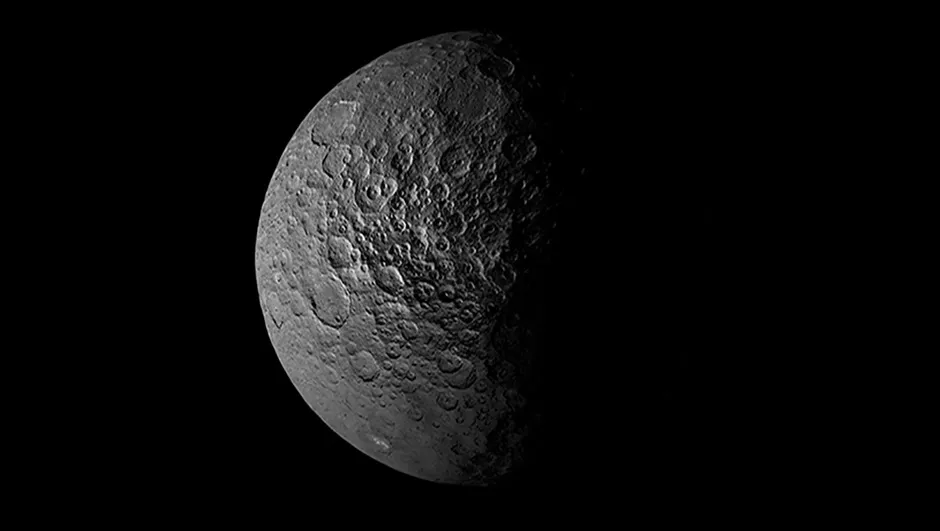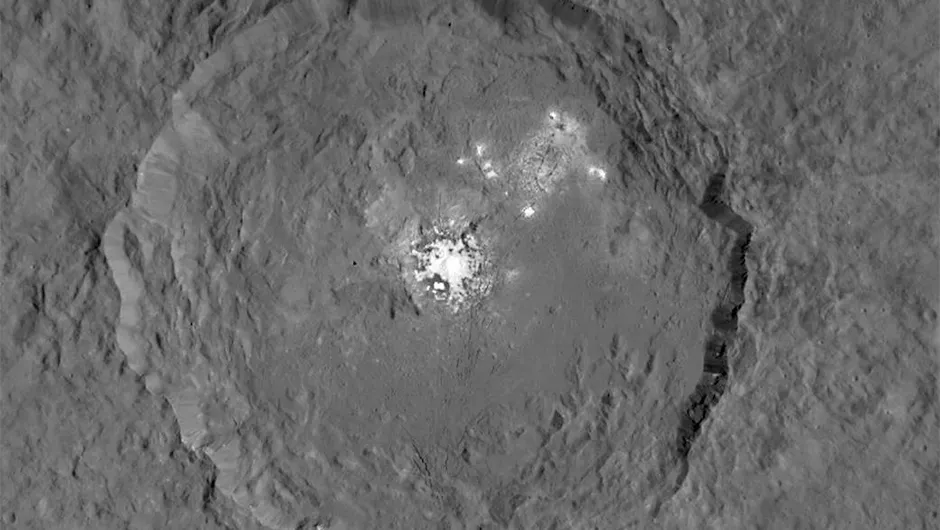Planetary scientists have a good idea which planets and worlds of our Solar System are likely to have – or once have had – conditions to support life.
Icy moons like Enceladus and Europa, with their liquid subsurface oceans, are a good bet; so too moon Titan with liquid methane lakes and rivers on its surface.
Also Mars, which we know once had liquid water flowing on its surface, and therefore could have hosted life in its ancient history.

But what about Ceres, a dwarf planet and the largest object in the asteroid belt?
Looking at this barren, frozen, grey world, we might be forgiving for thinking it the last place likely to host life in our Solar System.
But appearances can be deceiving.
Today Ceres is a frozen, airless dwarf planet, but billions of years ago, it may have had the right combination of ingredients for life: water, organic molecules and chemical energy.

An energy source beneath Ceres' surface
Scientists have discovered evidence that Ceres’ interior once provided a steady flow of chemical energy, the kind that can power microbial metabolisms on Earth.
The study, published in Science Advances, modelled how heat and water moved inside Ceres over time.
About 2.5 billion years ago, radioactive elements decaying in the dwarf planet's rocky core could have produced enough heat to drive hydrothermal activity.

Hot water carrying dissolved gases may have seeped into Ceres’ subsurface ocean.
“On Earth, when hot water from deep underground mixes with the ocean, the result is often a buffet for microbes, a feast of chemical energy," says Sam Courville, lead author of the study.
"So it could have big implications if we could determine whether Ceres’ ocean had an influx of hydrothermal fluid in the past."

The spacecraft that visited Ceres
NASA’s Dawn spacecraft orbited Ceres between 2015 and 2018, and this study builds on discoveries made by that mission.
Dawn saw bright, reflective patches on the surface of the dwarf planet that turned out to be salt deposits, left behind by briny water that had erupted from beneath the surface.
In 2020, scientists confirmed these salty outflows came from a huge underground reservoir.
Dawn also detected organic carbon molecules on Ceres: essential building blocks for life.
With water, carbon and now evidence of long-lasting energy, that means Ceres has – or once had – three major properties common to habitable worlds.

When Ceres was most habitable
Ceres today is too cold and icy to support life.
Its radioactive heat source has mostly burned out, and the remaining underground water is now concentrated brine, locked beneath thick layers of ice.
But scientists think the period between 2.5 and 4 billion years ago is the time when Ceres was most habitable.
That's when its rocky core was at its hottest and could send warm, mineral-rich fluids into its hidden ocean.
This doesn't mean scientists believe Ceres did host life during that time, but rather it's the time when Ceres most fulfilled the conditions necessary for habitability.
Unlike moons such as Europa or Enceladus, which are still heated by gravitational tug-of-war with their giant planets, Ceres now has no external energy source to keep things warm.

What Ceres teaches us about other ocean worlds
Ceres may be just one example of a bigger story in our Solar System.
Many small, icy bodies – including dwarf planets and moons – might have gone through a similar 'warm and wet' phase billions of years ago.
That means the search for life beyond Earth isn’t only about places that are habitable now.
Worlds like Ceres remind us that habitable environments may have come and gone in the past, leaving behind chemical fingerprints for scientists to uncover.
Read the full paper at www.science.org/doi/10.1126/sciadv.adt3283
